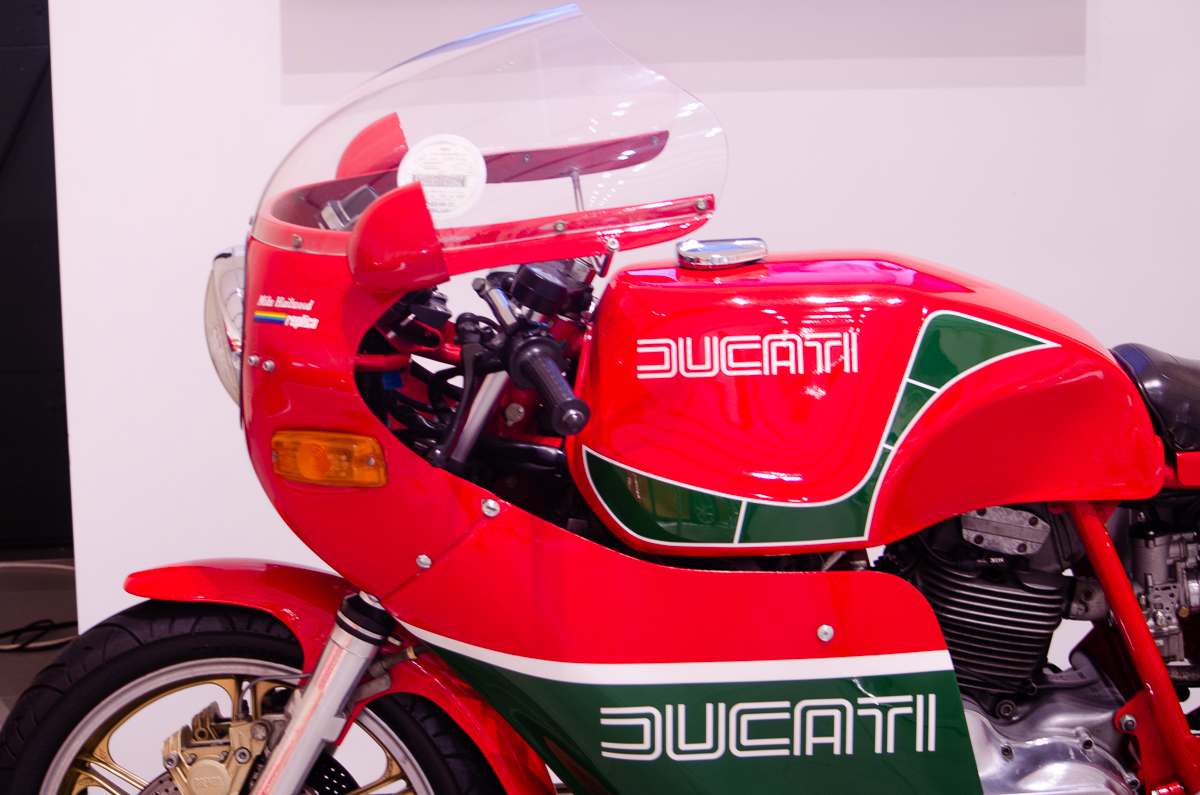
So, on a Sho’t Left recently to the Republic of the Western Cape. My better half and I spent a very restful week at an Air BnB in Simondium – “where?” you may mutter…well, if you draw a triangle linking Franschhoek, Stellenbosch and Paarl, it lies pretty much in the centre of that triangle, surrounded by mountains and wine farms – does it get better than that? The short answer is a resounding “yes”, as nestled between a number of wine farms and on the L’Ormarins estate is the Franschhoek Motor Museum, steeped in SA’s recent history, it is the relocated contents of the erstwhile Heidelberg Museum, which was opened in 1974 by Dr Anton Rupert and closed in 2004 by its then owners, British American Tobacco as it wasn’t part of the core business…duh, who would have thought…
Enter stage left, Johann Rupert, son of the good Doctor who, wanting to keep the legacy alive bought the entire museum contents and relocated it to Franschhoek in 2004 opening the current display venue in 2007.

Now it has to be said, Samantha (the better half) is very far from a petrolhead but agreed to ‘take one for the team’ and join me, so we booked a slot online; (you can’t just pitch up like a normal museum – and that starts to set the scene for the differentiation between the FMM and other transport orientated museums I have visited).
At the appointed hour we arrived at the boom gate and were welcomed by the security guards, characters in their own right who permitted us entry into the pristine grounds of the L’Ormarins Wine Estate, with its manicured lawns and gardens, set against the stunning backdrop of the Drakenstein Mountains.

The collection itself is absolutely beautifully maintained with not a speck of dust evident anywhere in the four climate-controlled halls and comprises in total around 220 vehicles, of which around 80 are on display at any given time, thereby encouraging repeat visits, I guess! Hall A starts with an 1898 Beeston Motor Tricycle and Hall C chronologically ends with a 2016 Chevrolet Br’Ute modified Corsa bakkie, whilst Hall D just takes it to a whole different level…
So, let’s have a bit of a deeper dive into the contents of each of these halls of excellence, which left me absolutely stunned, starting with Hall A, containing the earliest vehicles including the Beeston trike I mentioned earlier, some beautiful Bugatti’s, a Bentley, a Rolls Royce, all dating from 1898 to 1935. Henry Ford’s very first attempt at a motor vehicle is also represented in the form of a 1903 Model A, boasting a flat twin 1668cc motor developing an eye-watering 8 bhp…
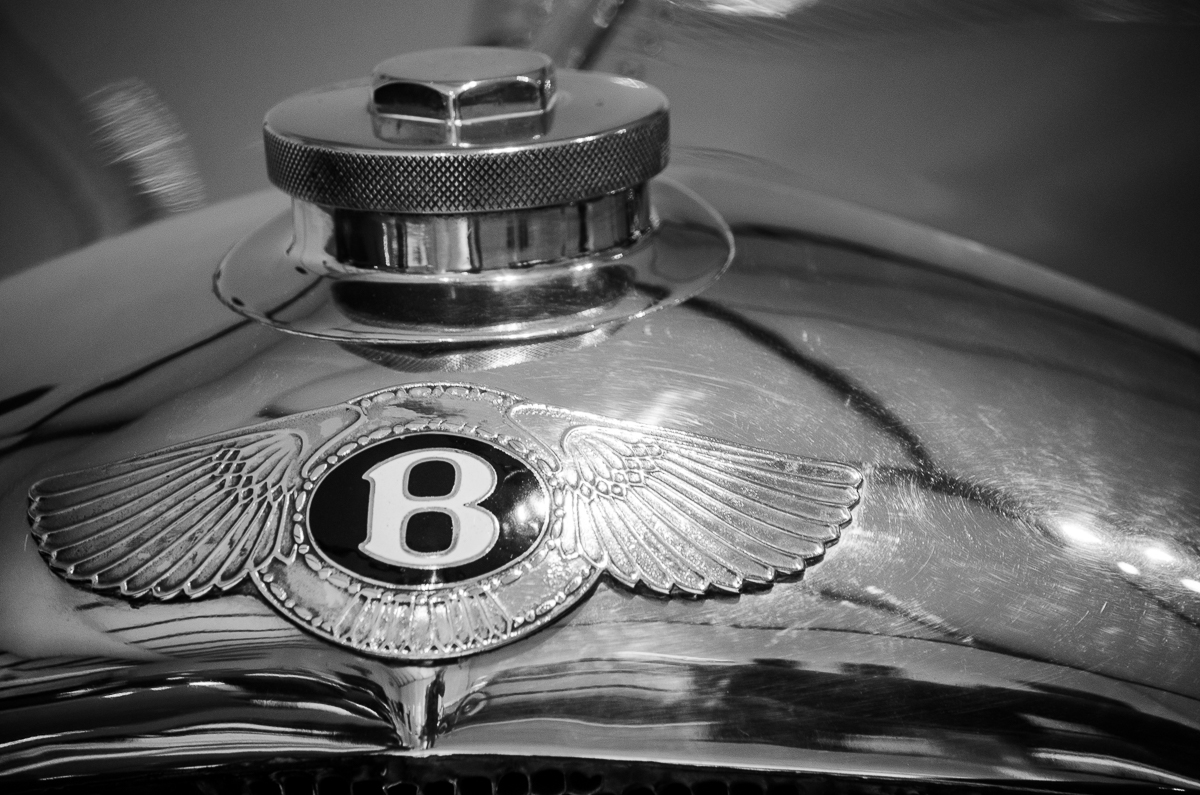
Bikes on display in Hall A included a 1917 Triumph Model H, 550cc producing 4bhp, a beautiful 1926 BSA S23 500cc, and a 1936 AJS Jarman 350.
Moving along to Hall B, which on a personal level didn’t talk to me at all, displays various Fords from 1923 to 1938, most of which looked like extras from the ‘Cars’ animated movie series, but on the upside; a 1956 Velocette Valiant and a 1926 Triumph Model P with its ‘bow’ front brake mechanism and 494cc four-stroke side valve single, brought some interest to an otherwise uninspiring display for me.
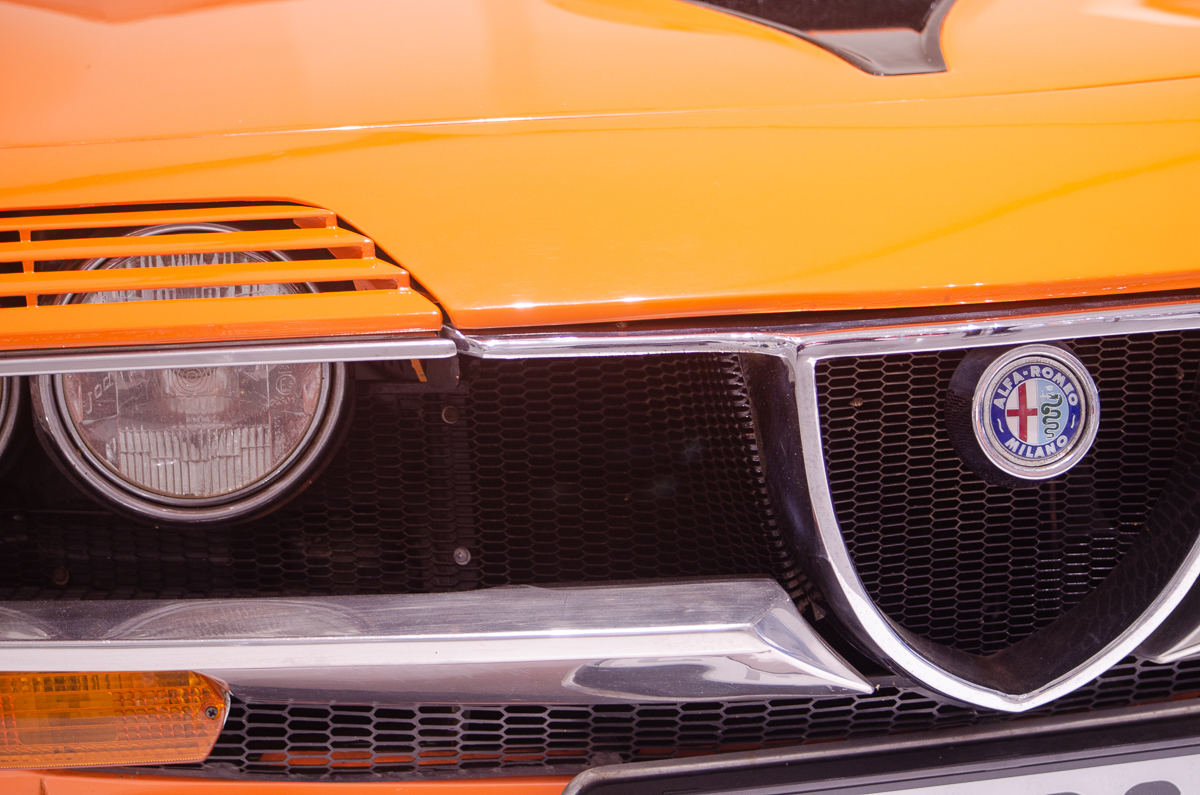
Hall C starts with a 1939 Fiat ‘Topolino’ and ends with the 2016 Chev I mentioned previously, but in between, there are some absolutely stunning Alfa Romeos, Jaguars, and a gorgeous 1959 Austin-Healey 100/6 2.6L roadster. It was somewhere in the middle of this hall that I came to a conclusion that has only taken me 58 years to reach, in my humble opinion when it comes to the design of both cars and bikes, the Italians and the Brits are the only ones who can really do it, with all due respect to the Germans, the Japanese, the French, the Americans and assorted others, visual rightness and jaw-dropping head-turnability belong almost exclusively to the Italians and the Brits, at least to my mind!
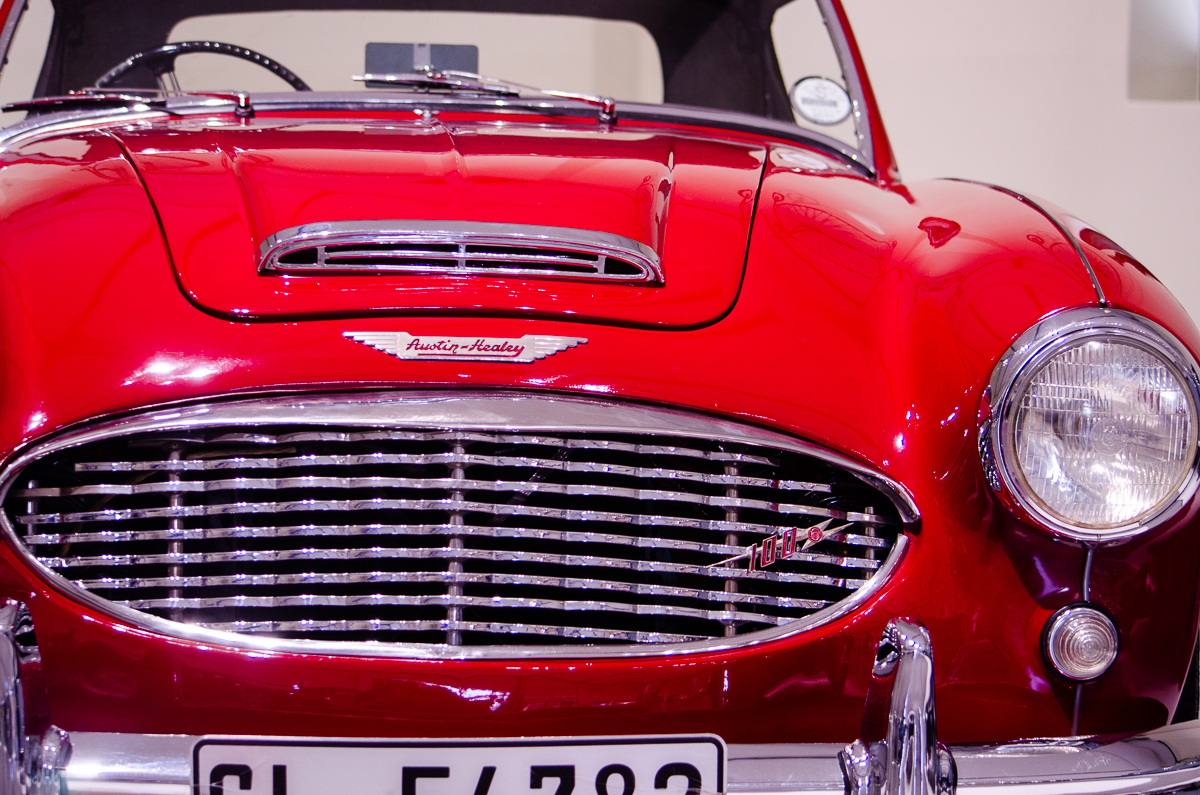
This Road to Damascus moment was reinforced when we entered the hallowed Hall D, which I have to admit has some absolute classic ‘Rest of the World’ sports cars including; the wild 1967 Renault Gordini, a 1979 Porsche 930 Turbo and the Corvette Z06 piloted around Zwartkops by the late great Sabine Schmitz, to name but a few; however the drool factor awards had to go to the two Astons posing nonchalantly in the bottom corner, a DB2/4 Touring Spyder and a DB4GT looking cool and aloof like that iconic James Dean photo. But conversely, wow they are beautiful… Incontrovertible proof if any was needed that my hypothesis isn’t too wide of the mark! This was further reinforced by the bikes in Hall D. Starting with the 1980 900 Ducati Hailwood Replica Mk 2, and my personal favourite the 1950 Manx Norton 500, the original ‘featherbed’ frame machine that dominated at the TT for a number of years, the 499cc single produced 40 kW and topped out at 230 km/h – for a 1950 steed.
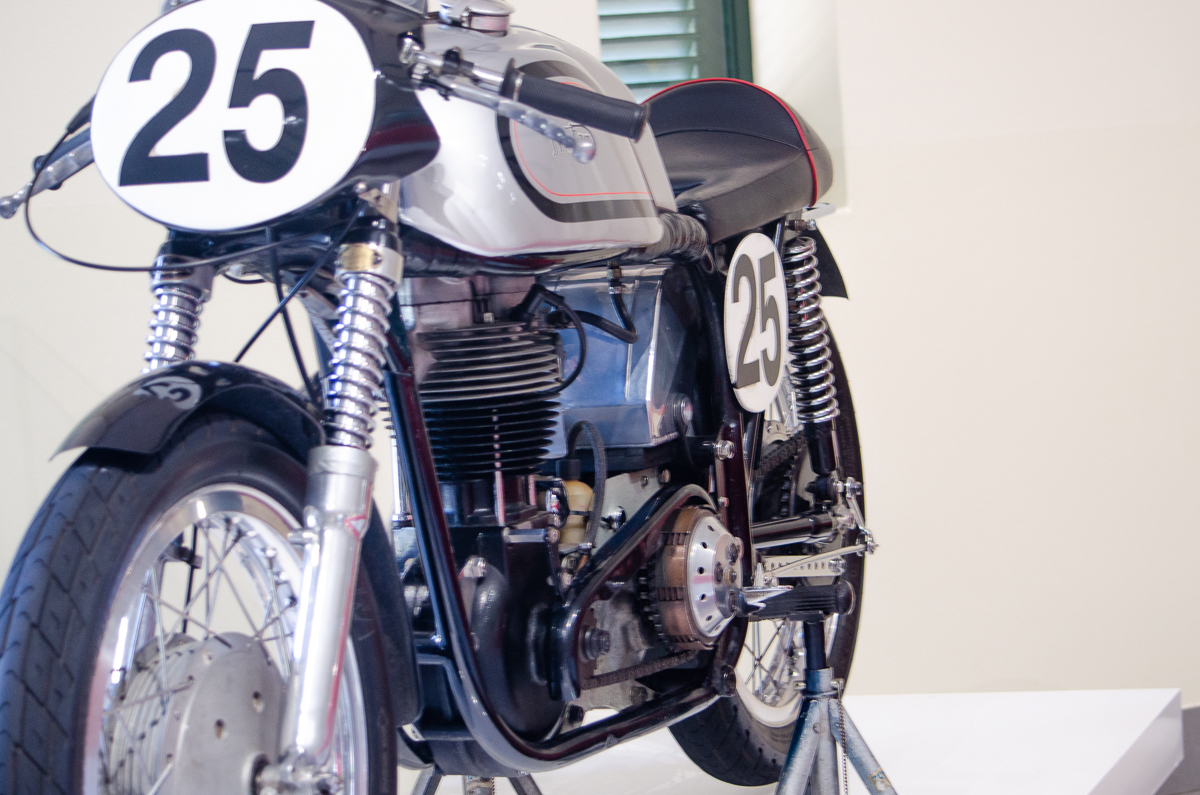
Hall D is rounded out with some legendary classic SA motor racing machinery including the Gunston liveried Chevron B25/3 Formula 2 spec Cosworth, Ian Sheckter’s 1976 Lexington Formula Atlantic and brother Jody’s 1974 Tyrrell Ford 007. Not the one that looked like it was two cars in a permanent dice – the 6-wheeler, but the previous 4-wheel-only model, boasting a 3 litre V8 Cosworth producing 358 kW, in which he finished 3rd in the 1974 Formula 1 World Championship. A tiddler compared to the current 750 kW F1 hybrid monsters or the 1000 kW beasts of the mid-’80s, but the simplicity, lack of electronics, driver aids and extremely basic engineering are just astounding – RESPECT!!!
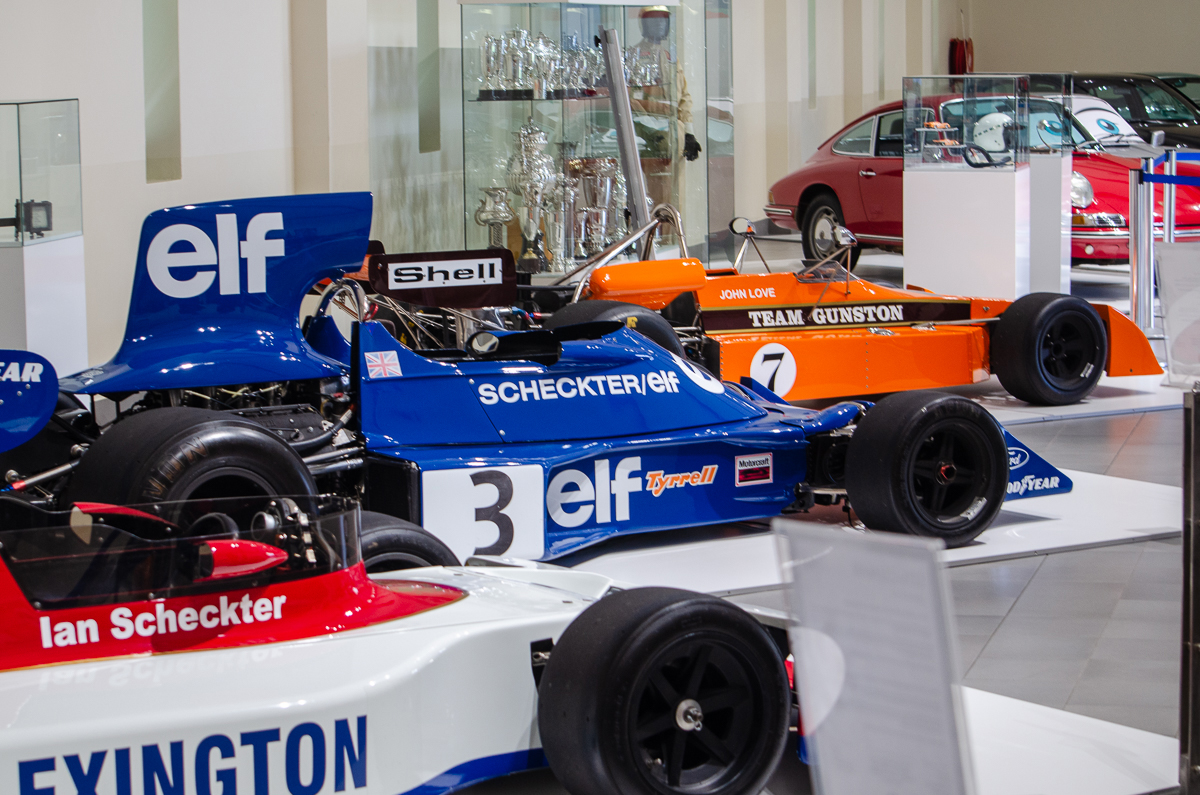
So, after an hour and a half of wandering and pondering, even a die-hard non-petrolhead like Sam admitted that she had loved the entire experience, the stunning environment and backdrops, the ambience, the pristine exhibits and the passion of the staff for their charges. This is a fantastic piece of SA and global motoring history, beautifully preserved and presented, and well worth the effort of pre-booking a slot next time you are in the area!
I do apologise for the excessive use of superlatives in this piece; they are, however, totally deserved!!
For more information visit: www.fmm.co.za





